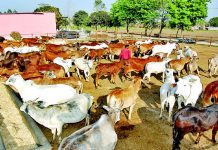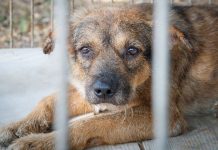This article is written by Rishika Rathore, from the School of Law, Jagran Lakecity University. This article discusses the rights that safeguard the animals on the streets along with relevant case laws that facilitated those rights.
Table of Contents
Introduction
We all are aware of Article 21 of the Indian Constitution, which says every human has the right to live with dignity. Have we ever wondered if this fundamental right shields non-humans too? Did we ponder on the thought that the fundamental right to live with dignity should be given to animals, especially those who live on the streets? Animal cruelty and harassment cases are frequent in everyday news headlines. In July 2018, a pregnant goat was gang-raped by 8 men in Haryana. On May 27, 2020, a pregnant elephant from Attappadi was brutally killed by locals by inserting fire-crackers inside the pineapples that she consumed. On July 2, 2020, twenty-two street dogs were cruelly transported to Nagaland in gunny bags to slaughter them and consume their meat. These heart-wrenching incidents are just a drop in the ocean of animal cruelty that is being performed all across the world. This article will discuss all the rights given implicitly in the Indian Constitution, the Indian Penal Code, and the legal framework established by the government to protect the homeless animals from any harassment, exploitation, and crime.
Legal framework for street animals
Like humans, animals also have natural rights like the right to live, the right to respect, the right to safety, etc. Although less in number, certain provisions in the Indian legal system provide orphan animals with a protective shield from inhumanity. It includes the Prevention of Cruelty to Animals Act, 1960, the Wildlife (Protection) Act, 1972, and some other laws that are discussed below:
Article 51A(g) of the Constitution – a fundamental right
The most inclusive set of animal protection rights has been provided by the Indian Constitution under Article 51A(g), which states that it is the fundamental duty of every Indian citizen to protect and improve the natural environment which includes forests, lakes, rivers, and wildlife, as well as to have concern for living creatures. This Article is the reason behind the advent of the Prevention of Cruelty to Animals Act, 1960, and the Wildlife Protection Act, 1972.
In the case of Animal Welfare Board of India v. A. Nagaraja & Ors. (2014), it was construed that compassion for all living creatures includes concern for their suffering and well-being. Also, the Supreme Court placed Article 51A(g) with Article 51A(h), which states the duty to make scientific temperament, like the ‘Magna Carta’ of animal rights jurisprudence in India. However, in the case of State of Gujarat v. Mirzapur Moti Kureshi Kassab Jamat & Ors (2005), the Supreme Court held that all provisions of Article 51A should go hand-in-hand with Article 48 and Article 48A as these were the intentions of the Parliament while enacting the said Article. This will ensure the honour of the spirit of all provisions under the Constitution.
The doctrine of ‘parens patriae’ to protect the rights of animals
The Latin term ‘parens patriae’ literally means “parent of his or her country”. This doctrine states that it is the inherent power of the state to act as a guardian for those who are incapable or unable to take care of themselves. In the Indian Constitution, the Directive Principles and the Fundamental Rights have made it crucial for the State to protect all its citizens, following the provisions provided under Article 38, Article 39, and Article 39A of the Constitution.
If we look at the broader prospect of the doctrine of parens patriae, it should be applied to animals as well because animals are the most essential but underrated citizens of every country. In 2014, in the case of Animal Welfare Board of India v. A. Nagaraja & Ors (2014), the Uttarakhand High Court admitted that under the doctrine of parens patriae, it is a moral duty and legal obligation to safeguard the rights of animals.
Recently, Delhi High Court directed that every Resident Welfare Association (RWA) should make a “Guard and Dog partnership” with the advice of the Delhi Police Dog Squad. This direction was made to make society dogs friendly to residents and train them as guard dogs. Moreover, the court also directed that feeding of community dogs should be done in areas designated by the Animal Welfare Board of India.
Animal Welfare Board of India
In 1962, the Government of India established a statutory advisory body called the Animal Welfare Board of India, to ensure that the animal welfare laws are being actively followed in the country, along with providing grants to animal welfare organizations. It was established under Section 4 of the Prevention of Cruelty to Animals Act, 1960. This board also advises the government and ushers them on animal welfare issues. It consists of 28 members and provides advisory services to the Department of Animal Husbandry and Dairying. The motive behind the initiation of this board was to protect the animals while setting up a specific body that shall look after the protection of animals under the light of animal welfare laws.
The rights of street animals
One of the largest NGOs that work and fight against animal cruelty is the People for Ethical Treatment for Animals (PETA). It conducts cruelty investigations, public education, research, animal rescue, legislation, special events, celebrity involvement, protest campaigns, and opposing speciesism. As of India, PETA India was established in Mumbai, in 2000 that focuses principally on the sectors like laboratories, the food industry, leather trade, and entertainment business, where animals suffer in large numbers.
It is notable that stray animals like cows and buffaloes need proper documentation when it comes to the matter of selling or claiming them. Moreover, people who want to feed stray animals like dogs, cats, cows, goats, etc. can get IDs issued by the Animal Welfare Board of India, to avoid any objection or harassment by their neighbour’s protest campaigns, and conduct of society members. These IDs will assist the bonafide feeders, providing food and protection to homeless animals from abusive and inhumane animal haters. The exclusive provisions against cruelty on stray animals are provided under Section 11 of the Prevention of Cruelty to Animals Act, 1960.
Right against harm and mischief
As per the provisions under Section 428 and Section 429 of the Indian Penal Code, it is illegal to maim, kill, poison, or render useless any animal. It is also unlawful to throw acid or any chemical on cows. It makes it illegal for cars to intentionally injure or kill dogs, cats, and cows on the street. This offence amounts to a fine of Rs. 2000 or a jail term of up to five years, can be reported to the police station or local animal protection group.
However, the ongoing fights for the right against animal rape can be seen frequently on news headlines. As mentioned earlier, eight men got arrested for the brutal crime of gang-raping a pregnant goat that died due to unbearable pain and suffering. This inhumane offence gave rise to the thirst in animal activists to punish the rapists under Section 377 (unnatural offences) and Section 429 (commits mischief by killing) of IPC. The reason behind such acts was the lack of explicit and strict laws under the Prevention of Cruelty to Animals Act, 1960, and the only way to grab maximum punishment for those rapists was to punish them under Section 377 of IPC.
Right against poisoning and feeding drugs
It is not illegal to feed animals who live on the streets. In fact, it is a moral duty of every citizen to feed stray animals who are dependent on us for food. But, feeding poisonous food, drugs, or any injurious substance to stray animals doesn’t count as a moral duty but as an illegal act given under Section 11(1)(c) the Prevention of Cruelty to Animals Act, 1960.
Right against relocation
As per the provisions of Section 11(1)(a), if any person beats, kicks, or tortures any stray animal that causes them pain and suffering, it will amount to an offence of animal cruelty. It also includes over-riding, overloading, or over-driving of animals, especially cows, buffalos, horses, and donkeys. Moreover, no sterilized dogs can be relocated from their respective area, as provided under the Animal Birth Control Rules, 2001, laid down by the Government of India. Societies, where the dogs are not sterilized, are allowed to ask for sterilization and vaccination of these dogs to animal welfare organizations.
Right against confinement
It is illegal to confine or keep any animal (both pets and strays) in a cage or container that causes them unreasonable suffering and pain, given under Section 11(1)(e) of Prevention of Cruelty to Animals Act, 1960. In cases where it’s necessary to keep the animal in a receptacle, then the length, breadth, and height of that receptacle should be measured sufficiently in accordance with the measurements of the animal, to allow it comfortable movements.
Right against display for entertainment
Under Section 22 of the Prevention of Cruelty to Animals Act, 1960, it is provided that any exhibition or training of an animal is prohibited, if the person indulging in such activities does not have the proper documentation from the government. Moreover, the Central Government can declare that a particular animal is not subjected to display for entertainment purposes, by notifying it in its official gazette. However, the matter of exhibition and displaying of animals was discussed a lot by the courts of India due to the cruel and harassing nature of these activities.
Right against slaughter
Under Section 3 of the Prevention of Cruelty to Animals Act (Slaughterhouse) Rules, 2001 and Chapter 4 of the Food Safety and Standard Regulations, 2006, it is given that no animal (including chickens) shall be slaughtered in any place other than a slaughterhouse. Also, animals that are sick or pregnant shall not be slaughtered. However, due to the absence of awareness towards these legal obligations, many animals, including birds are being slaughtered for religious purposes, for smuggling motives, or certain inhumane acts.
Significant cases that facilitated these rights
N.R. Nair & Ors. v. Union Of India (2001)
In the case of N.R. Nair & Ors v. Union Of India (2001), a crucial notification made by the Ministry of Environment and Forests was upheld by the High Court of Kerala. The notification stated that bears, monkeys, tigers, panthers, and lions shall not be exhibited or trained as performing animals. This notification was challenged in the Supreme Court of India, and later, the Apex Court declared that animals that are displayed or used for entertainment purposes are subject to cruelty and suffering. They are abused and caged, and therefore, such acts violate provisions of the Prevention of Cruelty to Animals Act, 1960. The petitioner argued that such declaration by the Hon’ble Court is an infringement of his fundamental right to carry out any trade or business under Article 19(1)(g) of the Indian Constitution. The Court denied this argument as such activities that caused pain and suffering to any animal would not be allowed.
Narayan Dutt Bhatt v. Union of India and Ors. (2014)
In the case of Narayan Dutt Bhatt v. Union of India and others (2014), a matter of overloading of horses came at the doors of the Uttarakhand High Court. Following such a case, the Court declared that the entire animal kingdom (from avian to aquatic) of the state will be considered as ‘legal persons’ and the citizens of Uttarakhand will be considered as their in loco parentis who would be obliged to protect and safeguard the animals.
Karnail Singh & Ors. v. State of Haryana (2019)
In the case of Karnail Singh & Ors. v. State of Haryana (2019), taking precedence from Narayan Dutt Bhatt v. Union of India and Ors., the Punjab and Haryana High Court declared a similar decision of considering the animal kingdom of Haryana as a legal entity and the people of Haryana, their in loco parentis. This order was made following the conviction made after the incident of the smuggling of cows.
Mustakeem & Anr. v. State Of U.P. (2019)
In the case of Mustakeem & Anr v. State Of Uttar Pradesh (2019), an FIR was filed against a cattle owner for transporting goats for slaughter in a very cruel manner, in which they were tightly strapped to each other, contravening the provisions of the Prevention of Cruelty to Animals Act, 1960. Despite the matter being in litigation, the High Court of Uttar Pradesh returned the custody to the owner. Later, the Supreme Court declared that animals in the case matter should be confiscated from the owner and secured in a gaushala, under the care of the state government who was given their charge, until the case is resolved.
People’s Charioteer Organization (PCO) & Anr v. Union of India & Ors. (2020)
Not long ago, in the case of the People’s Charioteer Organization (PCO) & Anr v. Union of India & Ors. (2020), a writ petition was filed by PCO in the Supreme Court, while urging it to declare the entire animal kingdom including avian and aquatic species as “legal entities” having a distinct persona with corresponding rights of a living person. It further demanded to frame and implement guidelines that can bridge the gap between the people and the legal rights of animals. The ultimate goal of such hankerings was to have a responsible, effective, and efficient legal framework for the protection and welfare of animals in India, and provide animal rights under Article 142 of the Constitution of India.
Conclusion
By discussing and analyzing various rights and case laws related to homeless animals, it would be right to conclude that indeed, there is a strict need for a rigid and specific legal framework related to the rights of animals against cruelty and harassment. Organizations like the PCO have the right to file a PIL with the Supreme Court under Article 32 of the Constitution. The obligation and duty of protecting animals’ rights are not only in the hands of NGOs and governments but also in the hands of common people like us. If we see a person hit by a car, or a person dying on the streets, what we normally do is try to help that person. But if we change ‘person’ from the word ‘animal’, do we even consider it? The frequent news like a small street dog killed by a car, a cat gone flat on the road as a truck ignored her presence, and many such incidents shows that most of the people choose to turn their faces from animal cruelty. Taking it as a moral duty, we should feed, shelter, and protect the animals on the street, while not waiting for it to become a legal duty.
References
- https://www.thebetterindia.com/52075/animal-welfare-cruelty-law-court-judgements/
- https://law.lclark.edu/live/news/44234-groundbreaking-litigation-seeks-to-extend-forma
- https://blog.ipleaders.in/a-time-for-change-in-animal-cruelty-laws/
LawSikho has created a telegram group for exchanging legal knowledge, referrals, and various opportunities. You can click on this link and join:
 Serato DJ Crack 2025Serato DJ PRO Crack
Serato DJ Crack 2025Serato DJ PRO Crack











 Allow notifications
Allow notifications



